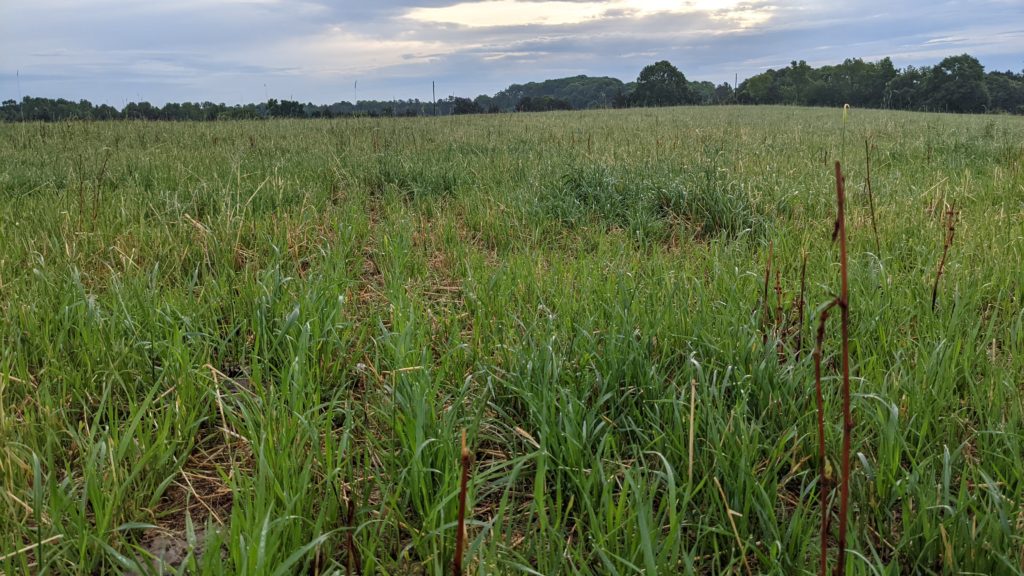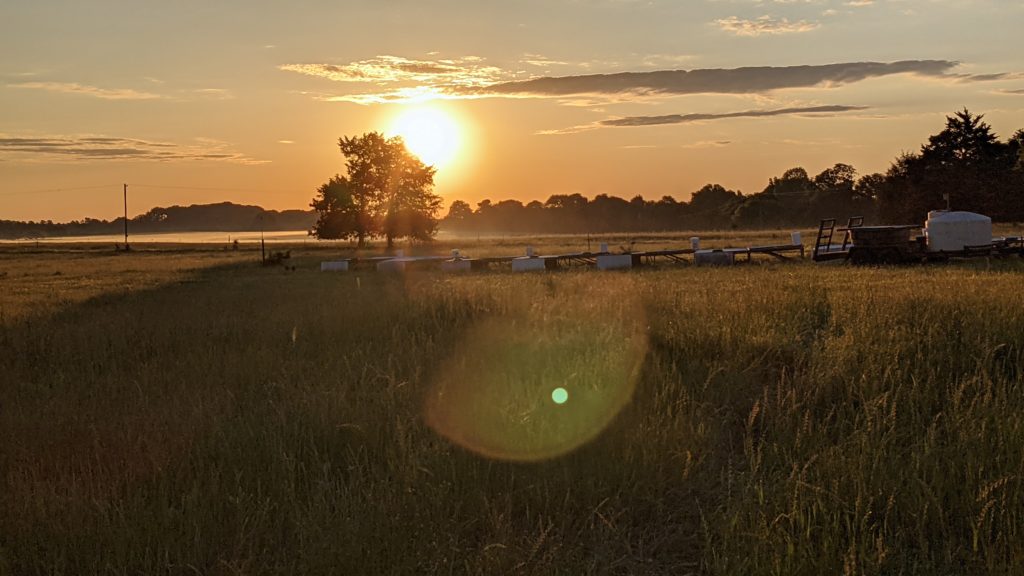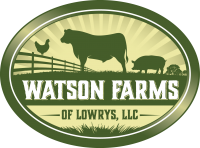Here’s the weekly roundup from Watson Farms and your direct connection to your farmer. Enjoy the latest edition of Pasture Posts!
Cattle can capture carbon!
We are met with a certain “good problem” each year around this time: lots of fast growing grass! Our farm’s stocking capacity (the number of cattle that we have forage for) doubles during April and May when compared with the rest of the year. This happens despite April and May not being historically wet months. What is happening is that days are getting longer and temperatures are getting warmer. There is also usually sufficient soil moisture to support rapid plant growth. The grass detects this and does it’s best to put out a seed head as quickly as possible.
Our goal during this time is to “reset” the plant’s growth back to it’s adolescent stage where it can start over in its effort to capture as much solar energy as possible in order to develop its seed head yet again. The grass plant will generally grow back a little shorter after each grazing. We repeat this cycle of disturbance and rest or growth-pruning-regrowth throughout the year. The more cycles we can complete, the more solar energy we are turning into grass-fed beef!
But there’s another major impact of this type of pasture management and that is carbon sequestration, which not only removes carbon dioxide from the air but re-forms it in the form of organic matter in the soil. This is done in two ways: by what is trampled on top of the ground, and by the plant depositing roots below the soil surface. Our goal in grazing is for the cows to eat one-third, trample one-third, and leave one-third of the grass standing to jumpstart the regrowth. When the top of plant is pruned by the cow, it also prunes its roots to match. This pulses organic matter into the soil with each grazing event. The litter that the cows trample covers the soil surface which helps prevent erosion and evaporation of moisture. This litter will then over time decompose and feed the soil again with a steady dose of carbon.
To sum this all up, anytime grass is growing, it is converting solar energy to something that is useful to livestock, especially cattle. By keeping the grass in a growth state, it is able to capture more solar energy and carbon. We allow our cattle to keep the grass growing by mowing it, which in turns allows them to convert the forage to nutrient-dense beef all while feeding the soil.
We believe this is a beautiful cycle that everyone should strive to understand further. Grass-fed cattle and other livestock are the key to removing carbon dioxide from our atmosphere and depositing carbon in the soil. Many people think that forests are the epitome of carbon-capturing ecosystems, but while forests are great, a properly managed, mob-grazed herd of cows can sequester far more carbon per acre than a forest.
Furthermore, cattle, when managed properly, are not actually the villain that they are depicted as by many groups currently. In fact, well-managed grass-finished cattle herds could be key in healing our planet.
Here’s some links to some articles, books, and films on this topic. Help spread the word and change the narrative that cattle are not the bad guys! Properly managed herds need to be supported by the consumer.
A blog post by Joel Salatin summarizing the above research paper.
Now for some photos that illustrate carbon capture and plant regrowth!


Take a look at some other scenes from around here this week!



The most popular customer request
Over the last year we have lost count of how many of you have asked something like: Can I come out to your farm and shop at your store? We listen to every customer request, but when so many of you request the same thing, we know that it’s time for action!
Those of you that have been with us for a number of years probably remember when we attempted a self-service store in the past. It had some success, but we eventually had to bring that to an end.
We are however reviving our on-farm store in the near future that will be complete with glass-front freezers and cooler! We also plan on extending our hours and having it staffed with a person knowledgeable about our farm.
Stay tuned for more details!
Ag + Art Tour!
After being cancelled last year, the Ag+Art Tour is back on and we are participating! The date that we are involved is June 26 from 10am – 4pm. We will be offering free tours throughout the day. Vendors and food trucks will be on site as well.
As we get closer to the date we will let you know more details. Stay tuned!
Referral Program
If you enjoy our products please consider passing the word along to your neighbors, friends and family! We don’t spend a lot of money of advertising but rather depend on customers like yourself to advertise for us if they are amazed by our products and customer service.
All you have to do is refer someone to us and when they place an order for the first time they will get a link to a form where they can say who referred them. You and the new customer will receive a $15 credit! So make sure they tell us your name. Hit the button for more info!
Check out this ⭐⭐⭐⭐⭐ review:
“I love ordering from a local farm‼️ I don’t have to worry about the junk that these large manufacturers put in their meat and I’m supporting local families. We placed our first order a couple weeks ago and haven’t had a chance to try everything but the chicken breasts are amazing. Very tender and highly recommend. Thanks Watson farms for your hard work????????“
We would greatly appreciate it if you would be kind enough to leave us a review.


[…] to not having bare soil exposed. Like we have talked about in several editions of Pasture Posts, (#12, #30, and #41), this is done in part by allowing our cattle to trample about one third of […]